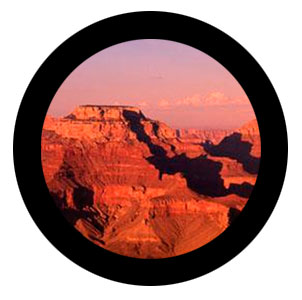
MENU

Grand Canyon
The Grand Canyon has long been thought of as a graphic example which, because of its awesome size, seemed to demand the inclusion of “millions of years” within the explanation for its existence. However, the 1980 eruption of Mt. St. Helens has produced an opportunity for scientists actually to observe the formation of a canyon that is about 1/40 the size of the Grand Canyon. “When the eruption occurred it melted snow on the mountain, and when the water mixed with volcanic debris it formed huge destructive mud flows . . . . These mud flows laid down enormous amounts of sedimentation . . . .”1 A second eruption occurred two years later which again produced mud flows. The second set of mud flows eroded large canyons in the materials that had been deposited two years earlier. The canyons revealed that the mud flows, while being laid down at up to ninety miles an hour, resulted in very finely stratified layers of coarse and fine sediment. The formation features of the canyons beautifully matched those of the Grand Canyon, giving scientists undeniable evidence that canyon formation can be very rapid. It is also interesting to note that the strata had hardened into solid rock after only five years.
In 1980, during the Second Conference on Scientific Research in the National Parks, scientists cited the recent events at Mt. St. Helens as helping to provide geologists with a fresh perspective on geologic processes:
Close study of some of the hard-rock erosion features which formed recently at Mount St. Helens also gives us a heightened appreciation of plucking [high-velocity water flow which produces powerful lifting forces able to remove blocks of bedrock along the flow channel] as a potent geologic process. Evidence for rapid breaching of natural lava dams in western Grand Canyon is noteworthy and is the subject of ongoing studies.2
Creation scientists now have empirical evidence demonstrating that it doesn’t take millions of years to form canyons like the Grand Canyon. It can take a very short period of time if you have lots of water. When you combine this information with the fact that we find billions of dead things all over the earth buried in massively thick rock layers laid down by water, the biblical explanation of the Flood fits the facts perfectly!

"...empirical evidence demonstrating that it doesn’t take millions of years to form canyons like the Grand Canyon. It can take a very short period of time if you have lots of water."
- Gloria Clanin, In the Days of Noah (Green Forest, AR: Master Books, 1996), p. 74.
- J. D. Rogers and M. R. Pyles, “Evidence of Catastrophic Erosional Events in the Grand Canyon,” Proceedings of the Second Conference on Scientific Research in the National Parks 5 (1980): pp. 392-454, as cited in Steve A. Austin, ed., Grand Canyon: Monument to Catastrophe (Santee, CA: Institute for Creation Research, 1994), p. 106.
Design, graphics and artwork copyright © 2016 Tim Beasley • All rights reserved.